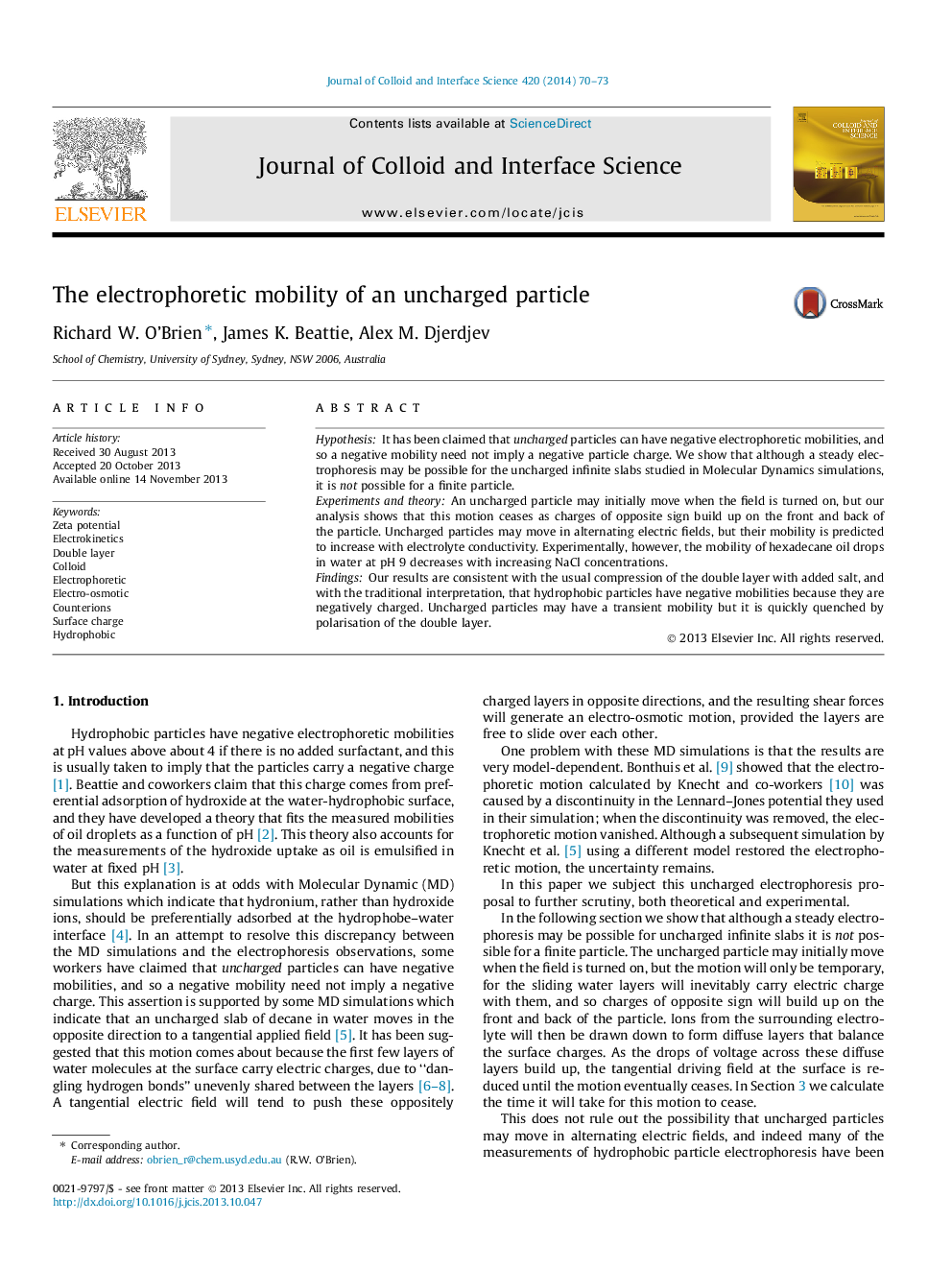| Article ID | Journal | Published Year | Pages | File Type |
|---|---|---|---|---|
| 607298 | Journal of Colloid and Interface Science | 2014 | 4 Pages |
•We test recent proposals that an uncharged particle can have a non-zero electrophoretic mobility.•We show that a steady mobility is impossible because of charge polarisation at the interface.•Although motion is possible in an ac field, we show that the uncharged theory does not fit experimental data.•Thus the uncharged mobility hypothesis cannot account for standard electrophoresis observations.
HypothesisIt has been claimed that uncharged particles can have negative electrophoretic mobilities, and so a negative mobility need not imply a negative particle charge. We show that although a steady electrophoresis may be possible for the uncharged infinite slabs studied in Molecular Dynamics simulations, it is not possible for a finite particle.Experiments and theoryAn uncharged particle may initially move when the field is turned on, but our analysis shows that this motion ceases as charges of opposite sign build up on the front and back of the particle. Uncharged particles may move in alternating electric fields, but their mobility is predicted to increase with electrolyte conductivity. Experimentally, however, the mobility of hexadecane oil drops in water at pH 9 decreases with increasing NaCl concentrations.FindingsOur results are consistent with the usual compression of the double layer with added salt, and with the traditional interpretation, that hydrophobic particles have negative mobilities because they are negatively charged. Uncharged particles may have a transient mobility but it is quickly quenched by polarisation of the double layer.
Graphical abstractFigure optionsDownload full-size imageDownload high-quality image (17 K)Download as PowerPoint slide
